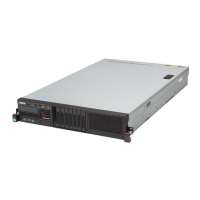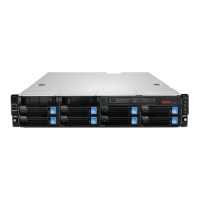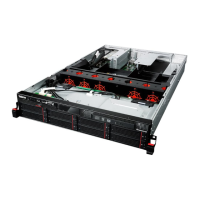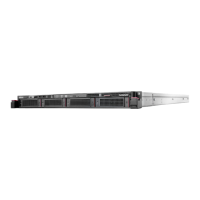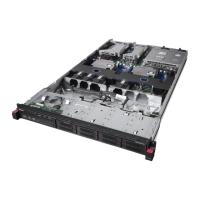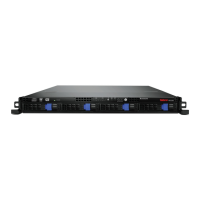LSI Corporation
- 104 -
12Gb/s MegaRAID SAS Software User Guide
March 2014
Chapter 5: The HII Configuration Utility
Managing Configurations
Table 24 RAID Levels
5.3.3 Creating a CacheCade Virtual Drive
A CacheCade virtual drive is a software virtual drive that enables SSDs to be configured as a secondary tier of cache to
maximize transactional I/O performance for read-intensive applications. The following window appears when you
select Create CacheCade Virtual Drive from the Virtual Drive Management window.
Figure 69 Create CacheCade Virtual Drive Window
Follow these steps to create a CacheCade virtual drive.
1. Highlight CacheCade Virtual Drive Name, press Enter, and enter a name for the virtual drive.
2. Highlight the RAID Level field and press Enter.
3. Select a RAID level for the CacheCade virtual drive from the pop-up menu.
The available RAID levels are listed in the help text of the Create Configuration window. Some system
configurations do not support all these RAID levels. See Table 24for brief descriptions of the RAID levels.
4. Highlight the Write Cache Policy field and press Enter.
5. Select a write cache policy from the popup menu. The choices are as follows:
Level Description
RAID 0 Uses data striping on two or more drives to provide high data throughput, especially for large files in an environment
that requires no data redundancy.
RAID 1 Uses data mirroring on pairs of drives so that data written to one drive is simultaneously written to the other drive.
RAID 1 works well for small databases or other small applications that require complete data redundancy.
RAID 5 Uses data striping and parity data across three or more drives (distributed parity) to provide high data throughput
and data redundancy, especially for applications that require random access.
RAID 6 Uses data striping and parity data across three or more drives (distributed parity) to provide high data throughput
and data redundancy, especially for applications that require random access. RAID 6 can survive the failure of
two drives.
RAID 10 A combination of RAID 0 and RAID 1 that uses data striping across two mirrored drive groups. It provides high data
throughput and complete data redundancy.
RAID 50 A combination of RAID 0 and RAID 5 that uses data striping across two drive groups with parity data. It provides high
data throughput and complete data redundancy.
RAID 60 A combination of RAID 0 and RAID 6 that uses data striping across two drive groups with parity data. It provides high
data throughput and complete data redundancy. RAID 60 can survive the failure of two drives in each RAID set in the
spanned drive group.

